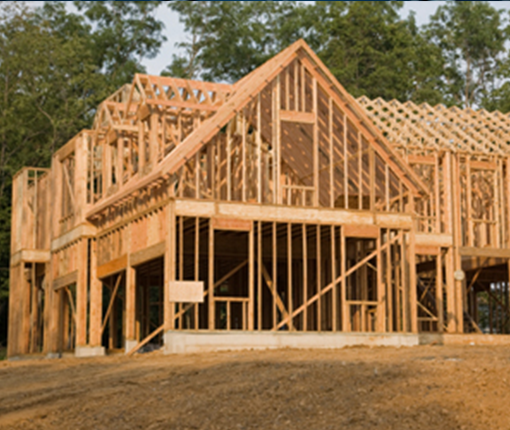Cooling Off A Hot Attic
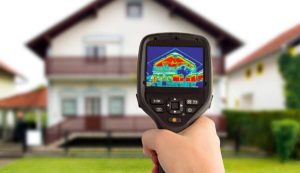
Most of the U.S. is broiling under a heat wave at the moment. From the Midwest to the East Coast a sweltering parade of 100-degree days seems to be marching across the country without end. Severe weather is the norm these days, and when times are hot like they are right now, it’s nice to have a cool home to retreat into. But if the interior of your house is roasting too, you’ll be glad to learn there are some hacks that can help with cooling it down. Let’s start with cooling down your attic.
What is an attic?
An attic is an uninhabitable space in your home that lies directly below your roof and above the ceiling framing of the top floor. On homes with tall, steep-pitched roofs, the attic spaces can be very large and voluminous. Homes with low pitched roofs will have very small and cramped attics.
Attics spaces are there to provide access to these areas for inspection, maintenance and service. Building codes require access to attic spaces but deem them uninhabitable because they lack things like insulation, floors, escape windows, climate control, fire resistance and other basic elements needed for safe human occupancy.
Conditions
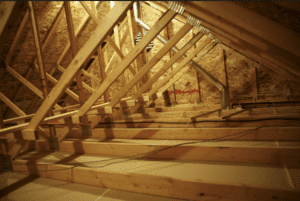
Since attic spaces are not inhabitable, they are usually left rough and unfinished. Attics spaces contain exposed framing, insulation, roof nails, electrical wiring, plumbing pipes, and heating ducts. On rare occasions a conscientious builder might have installed a bare bulb work light and some planking to traverse across the ceiling joists safely. That’s about it for attic amenities.
Attics are required by code to be passively ventilated to the outdoors, meaning outside air is encouraged to flow through the attic freely. If properly designed, fresh air will move in through screened openings around the eaves at the perimeter, then out at the upper areas of the roof through the natural movement of convection. Convection basically means hot air rises.
Since air flows freely through the attic, pollens, dust, smoke and any other pollutants in the air migrate in as well and accumulate onto the interior surfaces. Any insects and animals able to find their way through the screened eave vents or any openings in the siding will also take up residence there. Because of all this, an attic space is a place most people prefer to avoid.
Heat generation
Under ideal conditions and with perfect ventilation, air would naturally flow through the attic at a pace that would keep the space very close to the same temperature as the outside air. This would be similar to how your house would feel if you kept the windows and doors open all the time. On hot days the rooms would be hot and on cold days the rooms would be cold.
In reality the attic space is much different than rooms in your home.
Inside your home, the outside walls and ceilings of the rooms are insulated, and the wood framing is covered with drywall. In the attic there is no insulation from the exterior (roof) and no drywall on the framing. This allows much more heat gain in the attic as compared to the interior of your home. The reason is that heat is transferred into the attic from the sun as well as from the temperature of the outside air.
Radiant heat from the sun
It works like this. The attic starts out the day with a volume of air that is about the same temperature as the outside air. As the day progresses, sunlight radiates down on the home heating up the surface of the roof. As the roof surface temperature rises, this heat transfers (conducts) down through the sheathing and rafter framing.
Thermodynamics and heat gain
Now the roof structural members and sheathing in the attic space are hot and they begin to transfer heat to their surroundings. They do this in a couple of ways. 1) heat radiates from the roof framing down through the attic and heats up anything it comes in contact with including stored boxes, the ceiling framing, furnace ducts, wiring, ceiling insulation, dust, dead rodents, etc. 2) All the hot items in the attic (framing, sheathing, toys, boxes, insulation, dust etc.) now begin to conduct (or transfer) heat to the surrounding air molecules that come in contact with it. This all happens fairly quickly.
The process described above produces heated air much faster than it can be exchanged through ventilation. The result is an extremely hot attic.
The sun’s radiant heat is the engine for all this, and the process continues as long as the sun is shining on the structure. Even after the sun goes down, the hot items in the attic will continue to radiate and conduct heat keeping the air inside warm long after the outside temperature has cooled down.
Convection
Once the air in the attic has become hot, another thermodynamic process called convection occurs. Convection is the characteristic that makes hot air rise and cool air sink ,and it is at this point where a good ventilation system comes into play. As the air inside the attic becomes hot, it will rise to the highest point in the roof and escape through any vents placed there for that purpose. (Continuous ridge vents are good for allowing hot air to escape at the place it collects.) As the hot air escapes out the top, cool air will be sucked in at the lower eave level to replace it.
Unfortunately, radiant heat causes the temperature of the attic to rise faster than the air can be exchanged through passive ventilation (convection). Large mechanical fans aiding the ventilation process may help some (by moving the hottest air out faster), but that will not prevent the radiant process from continuing to elevate the temperature of the entire attic structure and all its contents. In other words, faster air exchange (convection) may reduce the temperature of the attic air, but that will do little or nothing to cool the structural elements and contents because they are continually being heated by the radiant process.
So what’s wrong with a hot attic?
A hot attic it makes for a hotter house. This results in higher cooling bills and the need for thicker insulation above the ceiling. Another problem is any ducting in the attic will be heated and the heat will transfer into any the duct and warm any cool air moving through it and into the home. Also, any equipment in the hot attic will have to work harder to do its job and thus the life will be shortened. No heat sensitive items can be stored in a hot attic. You will be tempted to purchase an attic fan.
So how can you make a cooler attic?
Step one: Ventilation
Thanks to the radiant heat affect, attic temperatures on a 100-degree day can reach 170 degrees or more. That is certainly too hot, but how hot is OK? At the very best, conventionally ventilated attics can never be cooler than the outside air temperature. This is because the attic is essentially open to the outside air. If the air outside is 100 degrees in the shade, your attic cannot ever be cooler than that. But even 100 degrees in your attic would be much better than 155, so how can we move the temperature in that direction?
Passive venting
The easiest way to start is to maximize the passive ventilation in your attic. Make sure you have the most ventilation your home can handle. Code requires 1 square foot of vent opening to 150 square feet of attic space. I personally don’t feel that is near enough because the total volume of air that needs to be exchanged can vary quite a bit with the pitch of the roof. In addition, locating the vents is just as important. You will need as much square footage of vent at the apex of the roof as at the perimeter eaves. Put in as much as you can.
Mechanical fans
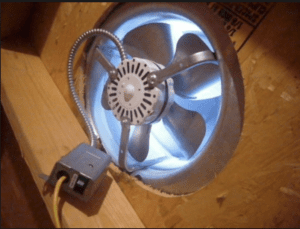
If you plan to use an attic fan to exhaust hot air out of the attic, make sure you have enough incoming air vents around the perimeter to accommodate the extra flow. Otherwise you can create negative pressure in the attic that will suck expensive conditioned air out of your living area.
Good ventilation improves the convection process. It helps to move some of the overheated attic air out and replace it with fresh “outside” temperature air. But this is not enough. Now we have to deal with the cause of the heat gain.
Step two: Radiant barriers
Once you have mastered the ventilation problem, the next step is to install radiant heat barriers. These barriers will help to reduce the heat gain created by the sun and prevent it from radiating from the roof throughout your attic. Radiant barriers are very effective in hot climates and especially effective when heating/cooling air ducts are located in the attic. Studies have shown these barriers will reduce a/c cooling costs 5% to 10% in hot, sunny climates. The reduced heat gain may even allow for a smaller air conditioning system.
Installation
Installation is fairly easy when building a new home. Simply drape the barrier between the roof rafters. Placing the material just under the sheathing will minimize dust accumulation on the reflective faces. Retrofitting barriers later can be more difficult. Space is tight when working in the attic and there will likely be framing, braces, wiring, plumbing ducts and other obstructions to work around.
It’s important to allow an inch or so of air space clearance between the attachment points and the bottom of the roof. The radiant foil will heat up, and the air space will allow the heat to migrate up and ventilate out. A couple of safety notes: Radiant foil will conduct electricity, so avoid making contact with bare electrical wiring. The foil may also interfere with cell phone reception. Please refer to the reflective insulation trade association as they offer other information and excellent installation tips.
Radiant barriers create invisible shade
What the reflective barriers do is halt the heat from the roof area from radiating down to the other interior areas and contents of the attic. The heat stops at the upper reaches of the roof framing. The barriers shield the area below that would normally themselves become heat sources (ceiling joists, cross braces, equipment, boxes with Christmas decorations and ducting etc.) that would then conduct heat to the air and make the attic hot.
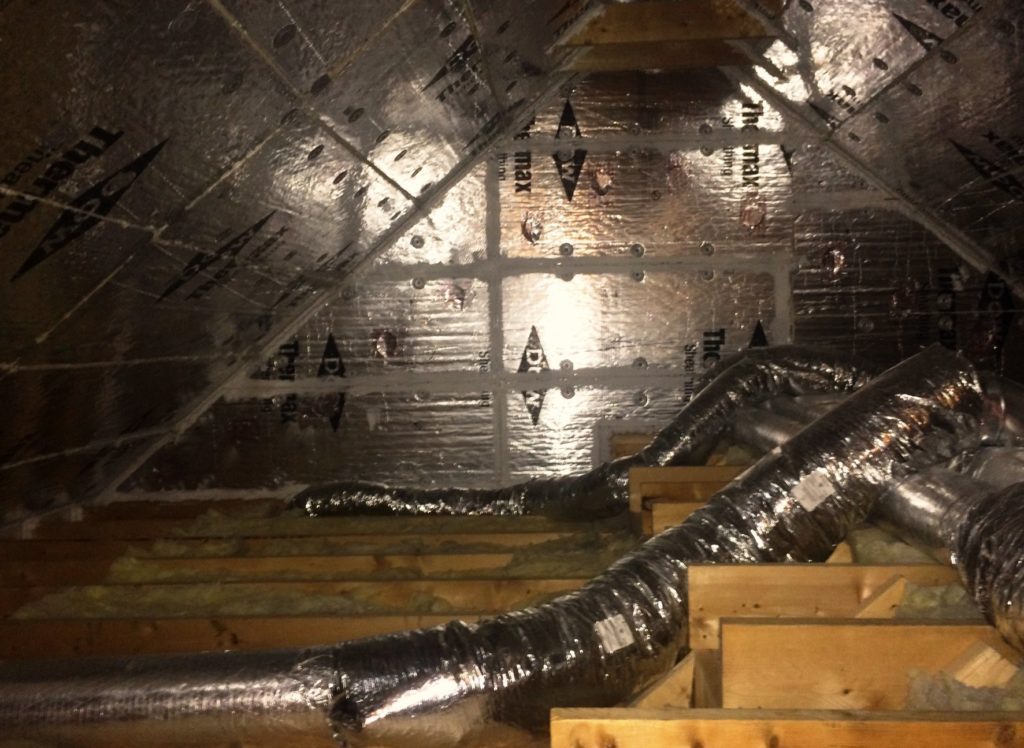
As discussed above, these solutions work. Radiant barriers will immediately reduce temperatures in your attic. The improvements will be significant, perhaps 20-25% lower than temperatures prior, but as mentioned earlier the temperature in your attic using these methods will never be lower than the outside air temperature. If the outside temperature is 110 degrees in the shade, your attic will always be hotter than that.
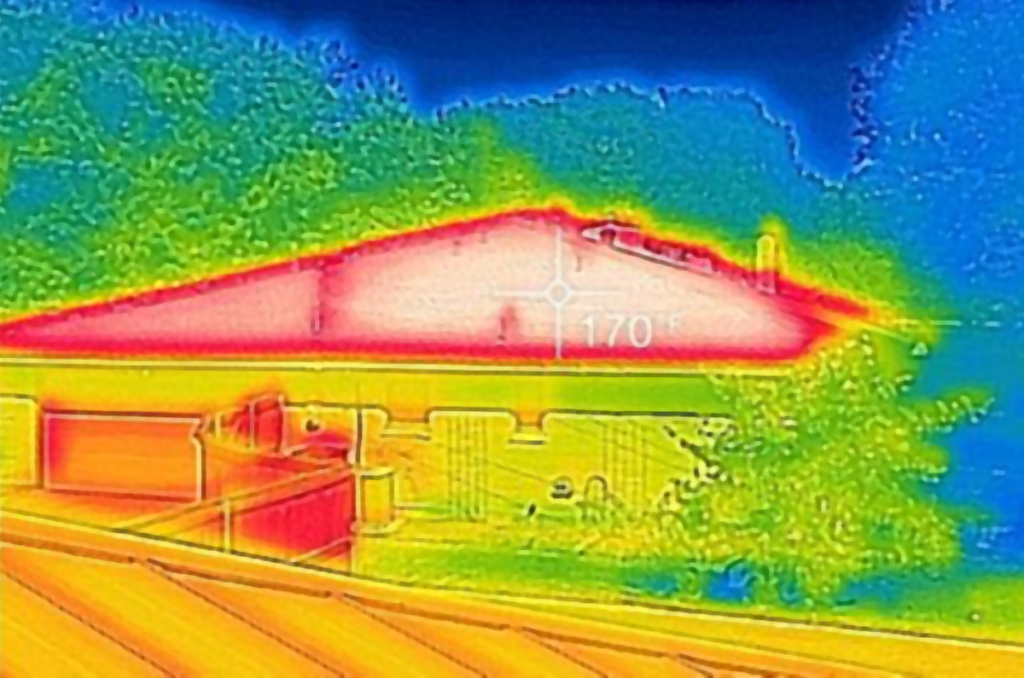
A conditioned-space attic…the ultimate solution
If you want a truly cool attic, you can convert it to conditioned space. I have used this option personally several times and highly recommend it. It requires some work and has a cost but it is worth it. A conditioned-space attic will keep the entire home cooler in summer, warmer in winter, while prolonging the life of any attic mounted equipment, and improving air quality in the home.
Creating a conditioned space attic means sealing up all eave/roof ventilation openings, removing the insulation between the ceiling/attic space then adding foam insulation to the underside of the entire roof system down to the wall plates. This turns your roof and attic into a kind of thermos and the air in the attic area becomes (conditioned) the same temperature as the interior of the home. This idea is not new but some building departments are not yet aware. Check the building codes in your area.
The key to a successful conditioned-space attic is to heavily insulate the roof diaphragm and completely seal it. Any air allowed to migrate will eventually find a cold place on which to condense and cause mold/dryrot. This sounds simple enough, but the frame of a highly complex roof has many places that might allow air to pass through.
High-tech foam
The solution that makes the conditioned space attic possible is spray foam insulation. Foam insulation is a chemical product created by mixing isocyanate and polyol resin. When these chemicals come together they form millions of tiny air bubbles and quickly expand up to 60x. The bubbles in the foam create extremely high insulation qualities per inch and the finished solution blocks the three primary forms of heat transfer, including radiant heat. Simultaneously it fills and seals any voids in and around the framing and allows no air/moisture filtration. This is a perfect storm solution for roof applications.
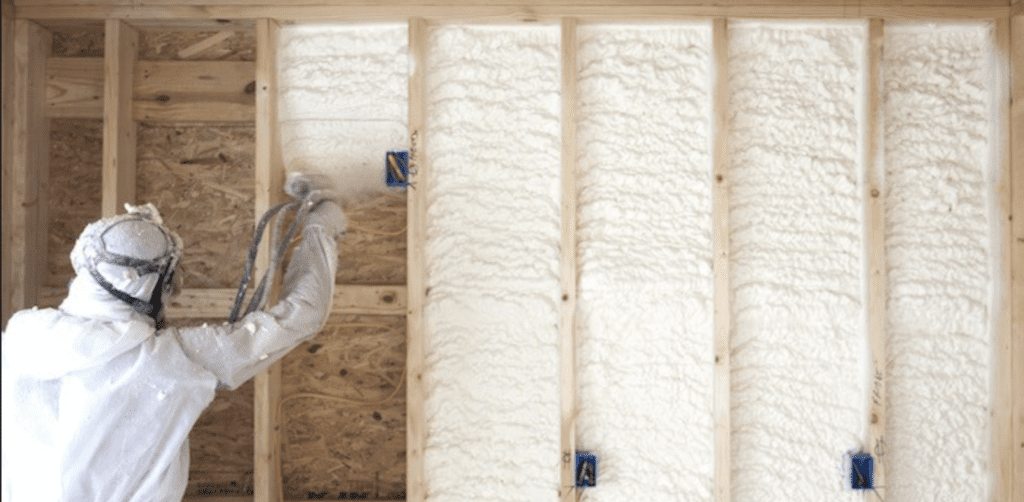
On my projects, I like to use a closed-cell foam product blown on by hydrofluoroolefin (HFO) to avoid any environmental or global warming impacts. Closed cellfoam provides a higher R-value per inch and is completely air/moisture tight.
With a conditioned-space attic there are no vents to the outside air. The removal of screened vent openings eliminates the infiltration of dust, smoke, pollens, insects, rodents and birds as well as heat and cold. Eliminating dirty air migration from the attic greatly improves air quality in the home.
Summary
Designing a cool attic can be tricky and requires a basic understanding of thermodynamics and how air and moisture migrate through a home. The combination of sufficient ventilation and the ability to control radiant heat gain are keys to success. Before you go out and spend money on fans or barriers take time to study your roof and attic to come up with a reasonable plan. Using this guide will help you have a cooler summer.

